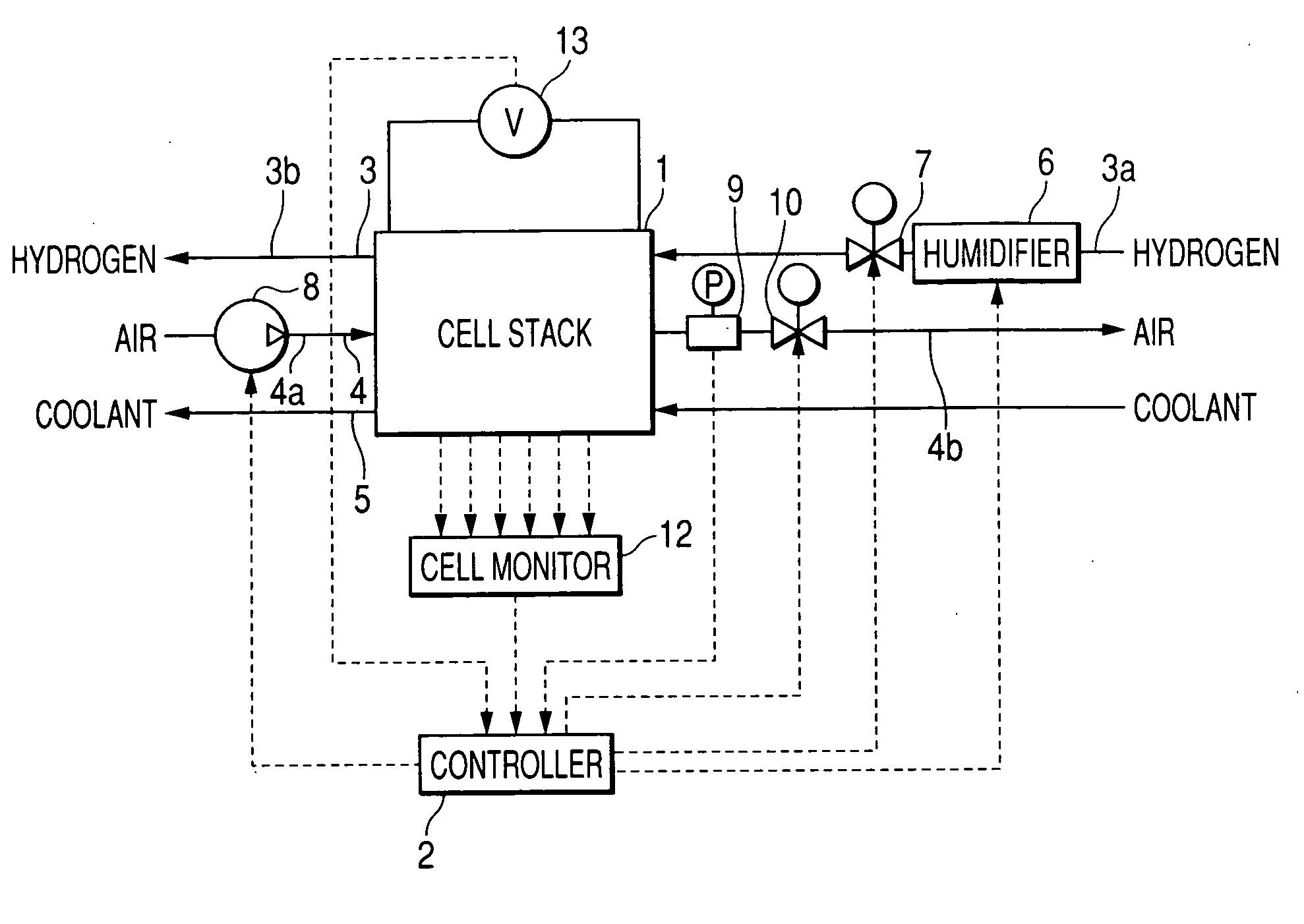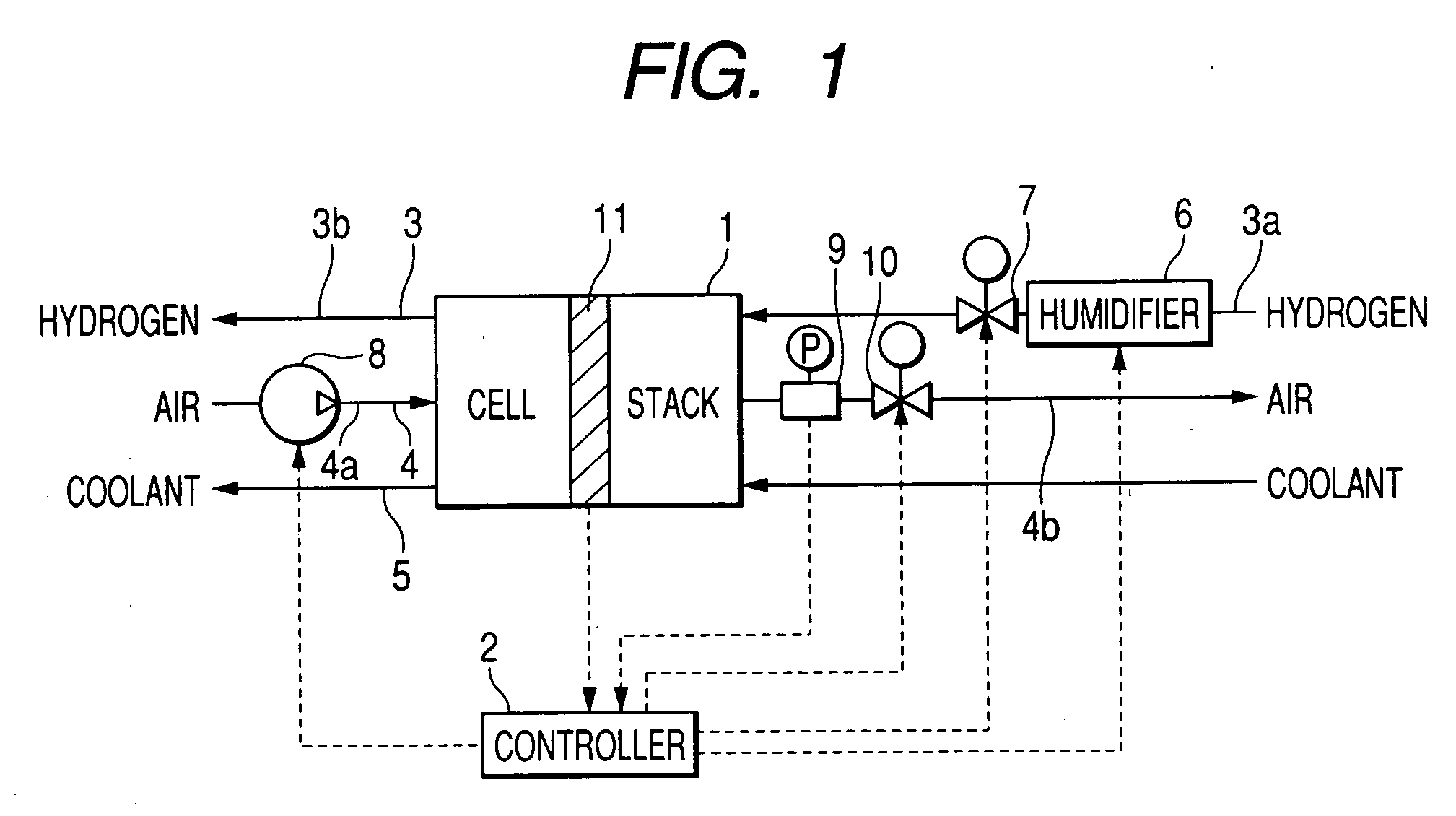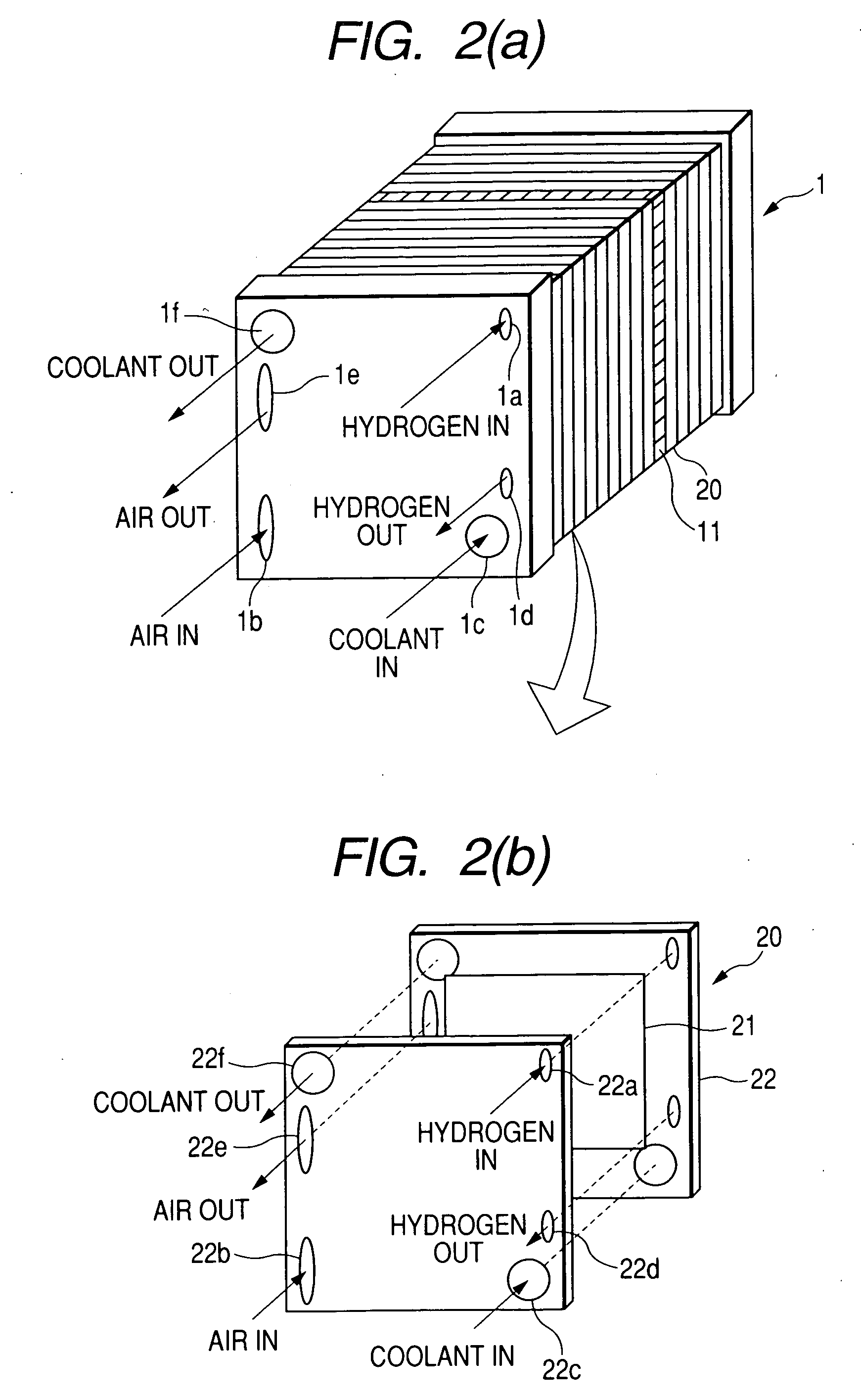Fuel cell system ensuring stability of operation
a fuel cell and stability technology, applied in the field of fuel cell systems, can solve the problems of the decrease in the apparent concentration of oxygen in the whole air supplied to the fuel cell, and achieve the effects of increasing the apparent concentration of oxygen, increasing the concentration of oxygen in the air, and reducing the amount of water vapor contained
- Summary
- Abstract
- Description
- Claims
- Application Information
AI Technical Summary
Benefits of technology
Problems solved by technology
Method used
Image
Examples
first embodiment
[0067] Referring to the drawings, wherein like reference numbers refer to like parts in several views, particularly to FIG. 1, there is shown a fuel cell system according to the invention which is designed to increase the pressure of air in air flow paths extending in fuel cells higher than that when the fuel cells are operating normally, thereby keeping the fuel cells in desired operating conditions.
[0068] The fuel cell system consists essentially of a fuel cell stack 1, a controller (ECU) 2, a hydrogen path 3, an air path 4, and a coolant path 5. The fuel cell stack 1 is made up of, for example, a plurality of solid polymer electrolyte (proton exchange membrane) fuel cells, as will be described later in detail.
[0069] The hydrogen path 3 includes a hydrogen supply line 3a through which hydrogen gas is supplied to the fuel cell stack 1 and a hydrogen drain line 3b through which the hydrogen gas is drained out of the fuel cell stack 1.
[0070] The fuel cell system also includes a typ...
third embodiment
[0172] Instead of the air pressure regulator valve 10, the throttle 14, as described in the third embodiment, may alternatively be used to regulate the difference between the pressure of the air in the air drain line 4b and the pressure of the hydrogen gas in the hydrogen supply line 3a.
[0173]FIG. 10 shows a fuel cell system according to the fifth embodiment of the invention which is a modification of the fourth embodiment, as illustrated in FIG. 7. The same reference numbers as employed in the fourth embodiment refers to the same parts, and explanation thereof in detail will be omitted here.
fourth embodiment
[0174] The controller 2 of the fuel cell system of the fourth embodiment, as described above, works to elevate the pressure of the air in the air flow path 24 above that of the hydrogen gas in the hydrogen flow path 23 of each of the cells 20 to transfer the water from the air flow path 24 to the hydrogen flow path 23, but it is designed in this embodiment to make a determination of whether the pressure of the air in the air flow path 24 should be elevated or not based on the voltage appearing at each of the cells 20 or the total voltage developed across the fuel cell stack 1.
[0175] The fuel cell system includes a current sensor 44 which measures a total current, as produced by all of the cells 20 of the fuel cell stack 1, and outputs a signal indicative thereof to the controller 2.
[0176] The controller 2 is designed to perform a water-removing program that is similar to the one of FIG. 9 except as described below.
[0177] First, in step 51, the controller 2 samples an output from t...
PUM
| Property | Measurement | Unit |
|---|---|---|
| pressure | aaaaa | aaaaa |
| pressure | aaaaa | aaaaa |
| impedance | aaaaa | aaaaa |
Abstract
Description
Claims
Application Information
 Login to View More
Login to View More - R&D
- Intellectual Property
- Life Sciences
- Materials
- Tech Scout
- Unparalleled Data Quality
- Higher Quality Content
- 60% Fewer Hallucinations
Browse by: Latest US Patents, China's latest patents, Technical Efficacy Thesaurus, Application Domain, Technology Topic, Popular Technical Reports.
© 2025 PatSnap. All rights reserved.Legal|Privacy policy|Modern Slavery Act Transparency Statement|Sitemap|About US| Contact US: help@patsnap.com



